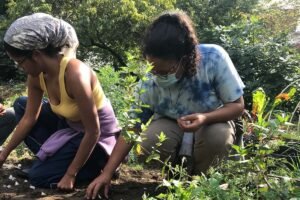December 7, 2016; Bozeman Daily Chronicle
In Bozeman, Montana, right now the local homeless shelter/warming center operated by the Human Resources Development Council (HRDC) is ending its year with fundraising numbers down significantly, right in the middle of bitterly cold temperatures. It raises the question about how social services organizations are doing with year-end fundraising as many donors focus on advocacy needs related to the election results. Has all giving gone up or does money going to one area lessen that going to others? There is no doubt that some years produce more for some fields than for others. During the recession, for instance, arts funding declined significantly only to bounce back a few years later.
This may be a difficult reality for many local social service groups whose margins are far from forgiving. Having appropriate shelter during the winter months in Montana isn’t about comfort; it’s a basic necessity for staying alive. Last week, the Bozeman area and all of southwest Montana were under a winter storm warning, a wind-chill advisory, and an avalanche warning. In 2007, before the warming center opened its doors in 2011, Bryan Dennis found himself homeless in Bozeman and froze to death while taking shelter in a U-Haul trailer. The shelter opened its doors for the season on November 1st and has seen an increase in usage this year with about 40 people a night taking shelter there, including families with children. Despite the increased need in the community, the shelter has only raised a quarter of the $200,000 they will need to operate for the season.
Compounding the problem, earlier this year a realignment of HUD priorities closed Amos House, a mid-term housing facility in Bozeman for those who need a few months to get themselves together before being stable enough to maintain housing. The house had also been run by HRDC since 2012 and was funded in large part by the U.S. Department of Housing and Urban Development, which administers federal housing funds. Earlier this year, Sara Savage from HRDC told news outlets that HUD had begun to abandon mid-term shelters in favor of a “rapid re-housing” model that aims to get homeless people directly into permanent housing of their own, offering rental support instead of funding to help shelters cover operational costs.
Sign up for our free newsletters
Subscribe to NPQ's newsletters to have our top stories delivered directly to your inbox.
By signing up, you agree to our privacy policy and terms of use, and to receive messages from NPQ and our partners.
All of this comes at a time when Bozeman is experiencing an increase in homelessness statistically higher than the national average. A 2014 count revealed the number of students attending school who do not have permanent housing had doubled. A Bozeman Daily Chronicle article, citing the National Alliance to End Homelessness, said, “While the number of homeless people dropped one percent nationally between 2009 and 2011, Montana’s number of homeless climbed 48 percent in that same time period.”
We are interested to hear from readers involved with social service nonprofits what their experiences have been over this end of year giving season. As always, that will be uneven based on any number of factors but are you seeing trends in your own community?
—Carrie Collins-Fadell and Ruth McCambridge











